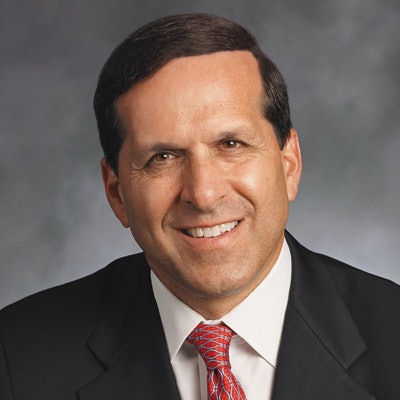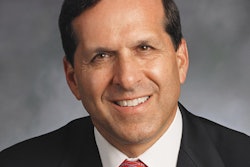
For most of us, 2020 was the most unusual year of our lifetimes. We faced an unpredictable pandemic, practice shutdowns, practice reopenings with extreme pent-up demand, lower patient volume, and a difficult economy. And to make matters worse, no one knows exactly when or how this will all end. So, what will 2021 look like? Will it be better or more unpredictable and challenging? Let's look at some things that might clue us in as to what may happen.
The reality of 2020
 Dr. Roger P. Levin is the executive founder of the Dental Business Study Clubs.
Dr. Roger P. Levin is the executive founder of the Dental Business Study Clubs.For the vast majority of practices, 2020 was not nearly as bad as it might have been, but there were, of course, many challenges.
The shutdown
The shutdown sent panic waves into dental practices and forced them to take actions they would have never considered before. The most impactful change was that most dental practices had to terminate their staff members. Practices had to find ways to stabilize themselves financially because, according to the Levin Group Data Center, over 90% of dental practices had less than one month of cash on hand. By eliminating staffing, which is the single largest expense in most dental offices, practices were able to reduce overhead significantly.
The reopening
Although practices had been itching to reopen for months, it created additional challenges, anxieties, and stress. Some offices had one or two team members opt not to come back while other practices had most of their staff not return. Some even had staff members who came back only to resign a short time later. In addition, practices had to master the new infection control guidelines. What might seem normal and systemized today was not part of dental practice procedure at the beginning of the year. Wearing masks, gowns, and face shields; taking temperatures; having patients wait in the parking lot; and other strict measures are now the new normal.
Pent-up demand
Due to the shutdown, practices were literally slammed with patients waiting for appointments. It didn't matter at that point that approximately 15% of patients were not returning to dental practices. There was still an overabundance of patients to deal with and this quickly led to monthly production records in June, July, August, and September of 2020. Unfortunately, it also led to fatigue and burnout for the doctor and staff.
Decreased hygiene
The increased coverage of patients in June, July, and August of 2020 sent patients into a new cycle that left October and November with a light hygiene schedule. The challenge is that when the hygiene schedule becomes light, dentist-driven production declines soon thereafter. According to the Levin Group Data Center, 50% of doctor production comes from patients who have recently had dental hygiene appointments. If those appointments decline, then doctor production will decline as well. Add to this the reality that approximately 15% of patients have not yet returned to practices and the effect becomes significant. This has also led to some offices releasing their hygienists and the dentist providing hygiene services themselves to remain busy.
Patient loss
As mentioned above, approximately 15% of patients are not ready to return to the dental practice. The effect of this was not felt during the pent-up demand phase, but it began having an effect in mid to late fall. These patients are concerned about two major issues: safety and finances.
Economic decline
When we reviewed the data from the Great Recession (2008-2009), we found that dental practices declined in production by approximately 8%-9%. It is reasonable to expect that this will happen again, depending on the steepness of an economic recession. The difficulty in making predictions is that the stock market and certain corporations are still performing extremely well. There is a debate as to whether this reflects the underlying economy, or whether the underlying economy will bounce back fast when vaccines become widely available.
A staffing shortage
Although there is no specific data yet to validate this, Levin Group's experience with dental practices across the U.S. is that many practices are having trouble replacing lost staff members with qualified individuals. We are projecting a shortage in many staff positions and recommending that practices focus heavily on implementing documented systems, clear scripting, and training programs for new staff members who will need to be brought up to speed quickly. It's interesting to note that when practices have fully documented systems with support training materials and scripting, a new team member can be trained approximately 50% faster.
What will 2021 look like?
It would be foolish to pretend that there is a detailed answer. There are numerous possible scenarios and questions to answer.
- Will people be willing to get the vaccine?
- How many doses will be available to the public?
- Will there be improvement in definitive treatment for COVID-19?
- Will the spike in cases be reduced in the spring of 2021?
- Will the underlying economy be further affected?
- Will the stock market and major corporations be able to hold their economic position?
Considering all these different scenarios, we are advising clients that 2021 will be a bumpy and inconsistent year. With that in mind, here are seven scenarios to know and understand.
1. We are all hoping there won't be a need for a national shutdown
We are already seeing local and regional restrictions based on COVID-19 cases, hospital capacity, and available medical care. It is still possible that some dental practices in affected areas could face periodic shutdowns or greatly reduced patient flow. Practices won't be able to predict if they will have to shut down and they must be able to protect themselves. That's why we advise you to put three to four months of cash into a separate reserve cash account. Keep in mind that if you don't need it, it can easily become income later.
2. We believe there will be a continuing staff shortage for some time to come
Therefore, it's important for practices to cross-train team members if certain team members must leave temporarily or resign. The average time to find new team members for most practices will be longer and some practices will need to identify new methodologies of working with a leaner team. Implementing documented systems, scripting, and training programs will be essential as many new team members will not have the experience level of their predecessors. Cross-training creates flexibility in the practice. It also contributes to building a teamwork-oriented atmosphere for people because they can now pitch in and help each other when time is available.
3. Dentists must continually highlight the mission of the practice to the team
By giving the team a sense of purpose about why they're coming to work, the focus can be on excellent patient care and not what is going right or wrong in their lives or the world on any given day. People love to have a purpose because it adds meaning to the work that they do. It's also important for the dentist as a leader to be compassionate, communicate regularly and clearly, and always be ready to help a team member who has unpredictable events come up, including daycare issues or taking care of an elderly parent.
4. Practices should be prepared in the event of a COVID-19 outbreak within the practice
This could necessitate a practice slowdown or shutdown for up to several weeks. In the event this occurs, it's important to already have a plan for communicating with patients, structuring work schedules, shutting down, and reopening. This will be a reality until widespread vaccinations are available.
5. We may (or may not) be heading into a deeper recession
If that were to happen, practices need to be prepared for lower case acceptance and decreased volume for current and new patients. This doesn't have to be catastrophic -- if the practice is proactive in using strategies such as promoting interest-free financing through scripting for every active and new patient. This gives people the confidence that they can afford to attend routine hygiene appointments and accept recommended treatment.
6. Practices should implement the best proven business systems available today
Systems make practices and team members more efficient, save time, and increase practice production. The goal currently is to increase production while controlling overhead to maximize practice profitability and create stability in an uncertain time.
7. Build a new scheduling model
Scheduling is critical especially when patient volume and daily capacity are down. We know that most practices are currently operating at approximately 80% of their pre-COVID-19 patient volume. However, by creating a new schedule, maximizing efficiency, and using the proper system and scripting psychology, we believe those practices can reach approximately 88% of their pre-COVID-19 volume. The higher the volume of patients that can be seen, the higher the practice production. However, this will require a new methodology and scripting that allows for maximum efficiency, a good understanding of the use of available chair time, decreasing no-shows, and good knowledge of how to maximize production in the schedule.
Summary
There is no getting around it -- 2021 is sure to be unpredictable. However, based on the current data and trends that have emerged in the COVID-19 era, 2021 can be a good year for most dental practices. The pandemic is still with us, but there is hopeful news with the rollout of an effective vaccine. And, like other historic pandemics have shown, gradually the situation will get better as public confidence rises, the economy begins to improve, and you continue to work toward what will certainly be a new normal.
Dr. Roger P. Levin is the executive founder of the Dental Business Study Clubs. To contact him or to join the 40,000 dental professionals who receive his Practice Production Tip of the Day, visit www.levingroup.com or email [email protected].
The comments and observations expressed herein do not necessarily reflect the opinions of DrBicuspid.com, nor should they be construed as an endorsement or admonishment of any particular idea, vendor, or organization.



















